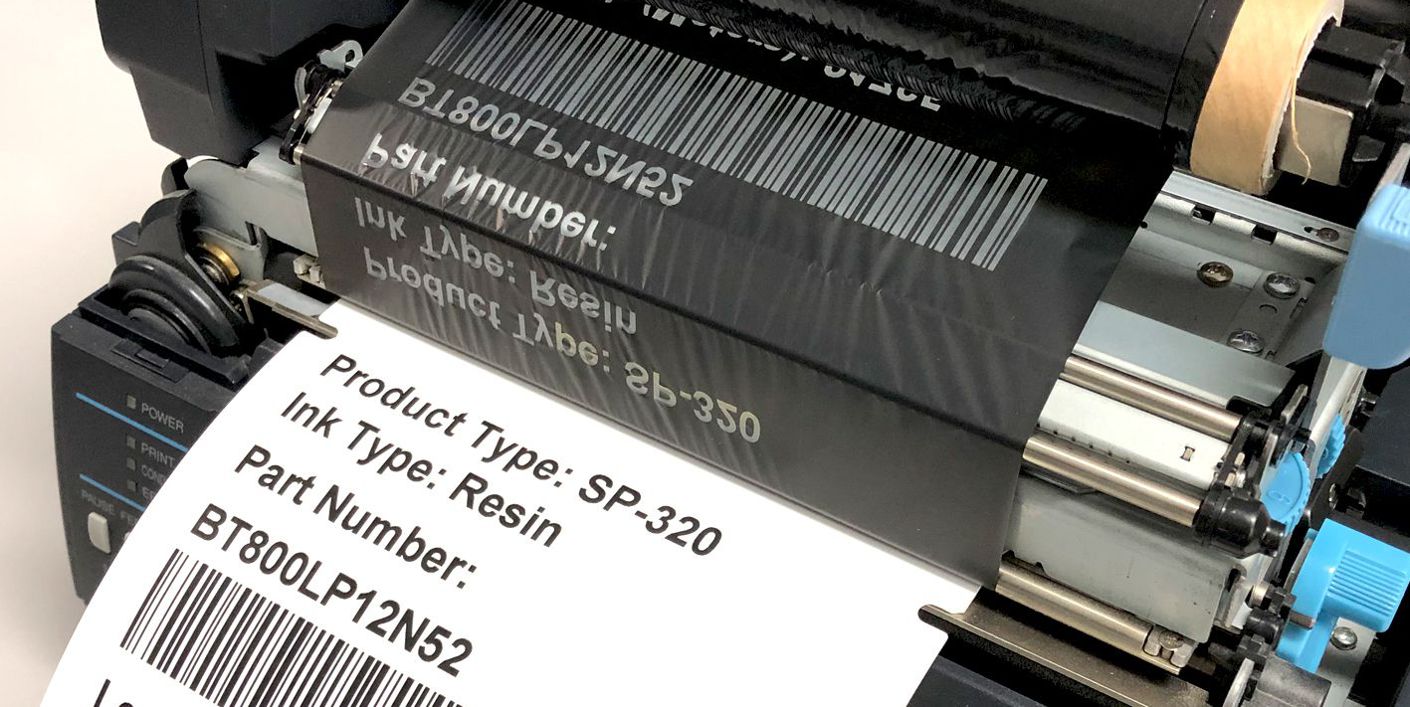
Thermal transfer ribbons (TTR) – what trends are shaping their use? Discover the three most important ones

Have you ever wondered what makes the barcode on your package legible after traveling halfway across the country? Or how is it possible that the label on frozen food can withstand sub-zero temperatures, and the markings on car parts are resistant to oils? The answer is often an inconspicuous but crucial technology: thermal transfer printing and appropriately selected thermal transfer ribbons (TTR).
This market, although mature, is undergoing a quiet revolution. It is driven by three powerful forces: the enormous growth of logistics, pressure to be environmentally friendly, and increasingly stringent regulations. Let’s see how these trends are affecting the industry and why choosing the right TTR tape is more important today than ever before.
Thermal transfer tapes and their driving force: logistics and e-commerce

We live in the age of e-commerce. Every click on “buy now” triggers a complex logistics chain, the absolutely crucial element of which is… the shipping label.
This segment is the main driver of the label market. Logistics centers, courier companies, and e-commerce warehouses use millions of meters of thermal transfer ribbons every day to print labels. Speed, reliability, and low cost are what matter most here. That is why wax ribbons maintain absolute dominance in this segment. They guarantee excellent, legible printing on paper labels, which is durable enough to survive transport from the warehouse to the customer’s door.
The green revolution in printing: sustainable development

The pressure to be environmentally friendly has not bypassed the packaging and labeling industry. End customers are becoming increasingly aware, and regulators are not far behind. Manufacturers of thermal transfer ribbons have had to respond to this challenge.
The “eco” trend in the TTR industry manifests itself in several ways:
- Solvent-free production: Modern production processes eliminate the use of harmful solvents, which is beneficial for both the environment and factory workers.
- Thinner substrates: There is a race to produce ribbon on a thinner PET substrate. Less plastic means less raw material, less weight in transport, and, most importantly, less waste to dispose of.
- Waste minimization: New tape formulas allow printing at lower head temperatures, which saves energy and extends equipment life.
- Today, when choosing a TTR tape supplier, it is worth asking not only about the price, but also about their contribution to sustainable development.
Security and tracking: strict regulations

While speed is important in logistics, safety and traceability reign supreme in industries such as pharmaceuticals, medical devices, and food.
Product traceability regulations, such as the EU’s Unique Device Identification (UDI) regulations for medical devices and food allergen labeling requirements, necessitate the use of extremely durable labels. The print must be legible throughout the product’s life cycle and resistant to:
- Abrasion and scratches
- Moisture and condensation
- Extreme temperatures (freezing, sterilization)
- Chemicals (alcohol, cleaning agents)
- This is where resin ribbons come into play. They are designed for printing on film labels (PE, PP, PET) and create an almost indestructible print that meets the most stringent industry standards.
Summary
Today, a label is much more than just a piece of paper with a barcode. It is a key element of the global supply chain, a carrier of information that guarantees safety and, increasingly, a testament to a company’s environmental responsibility.
What is worth knowing about TTR?
The thermal transfer ribbon market is evolving to meet three challenges: mass logistics, legal requirements, and sustainable development.
Not sure which ribbon is best for your business? Contact our experts. We will help you choose the solution that perfectly suits your needs – from standard logistics labels to highly specialized industrial markings.
